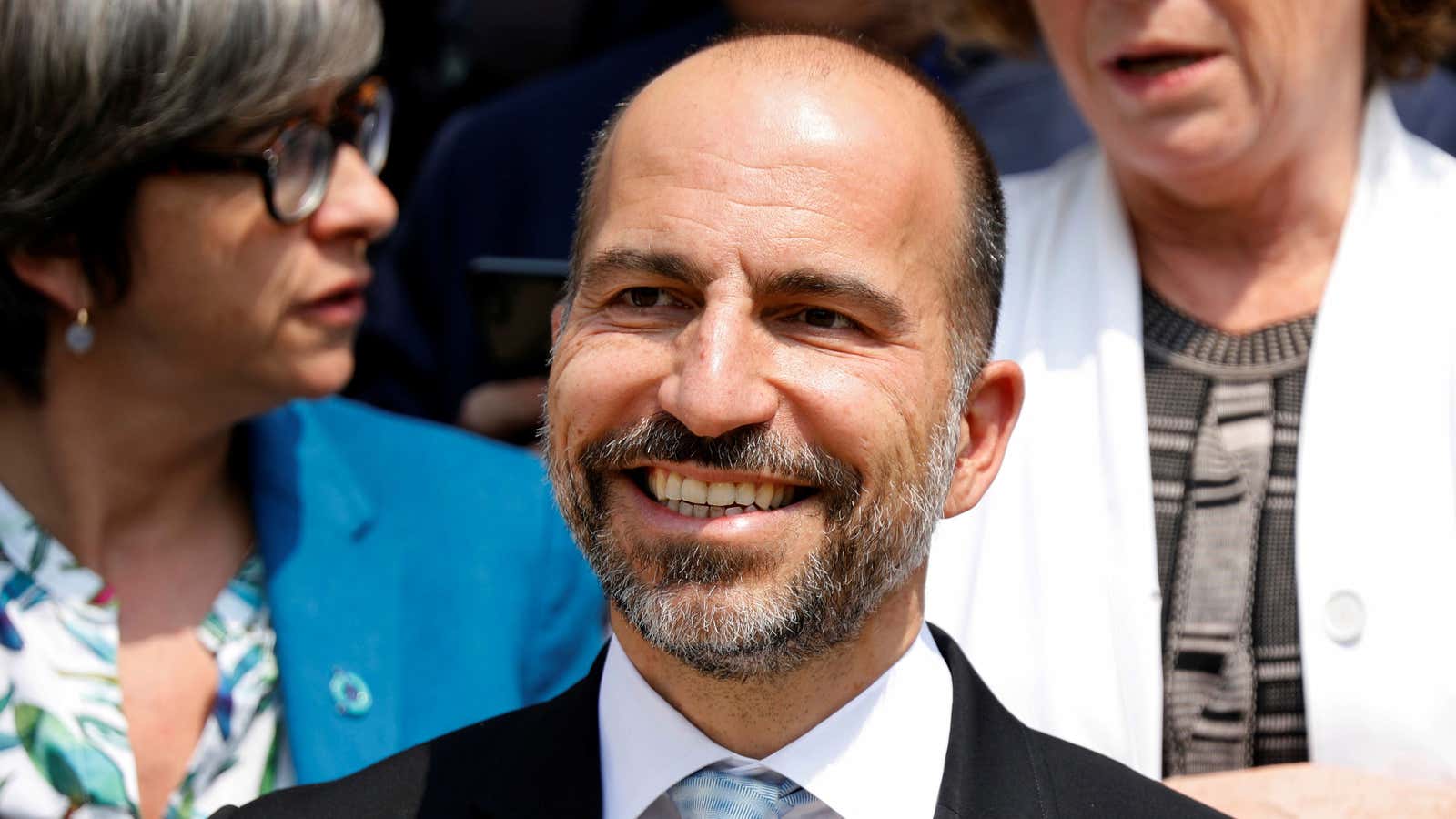Uber is still a privately held company, but it’s acting more and more like a public one.
The ride-hailing giant has shared quarterly results in calls with its investors since early 2017, and more recently began doing so with employees. Uber released its latest financials, for the first quarter of 2018, after the US markets closed today, roughly approximating how a listed company would present its quarterly earnings to analysts and investors (including by making arcane accounting adjustments).
In the first three months of 2018, Uber reduced its operating loss on a pro forma basis, to $304 million, from a loss of $475 million in last quarter of 2017. Proceeds from the sale of regional operations in Russia and in Southeast Asia skewed the company’s net earnings under generally accepted accounting principles (GAAP), turning a large statutory loss in the fourth quarter last year into a profit—in accounting terms—in the first quarter.
Gross bookings, or the sum of all ride fares and UberEats orders that Uber books, rose to $11.3 billion from $10.8 billion in the previous quarter, and from $7.3 billion in the same period a year earlier. Uber’s revenue, or the cut it takes from those rides and food deliveries, plus other revenue, climbed to $2.6 billion from $2.4 billion in the previous quarter, and $1.5 billion in the first quarter of 2017.
Dara Khosrowshahi, Uber’s CEO since August 2017, said in a statement that the rides business was beating internal targets and growing at a healthy rate. “We plan to reinvest any over-performance even more aggressively this year, both in our core business as well in big bets like Uber Eats globally,” he said.
A few months after he assumed the CEO job, Khosrowshahi said he would like to take Uber public some time in 2019, breaking with Uber co-founder and former CEO Travis Kalanick, who said the company would go public “as late as humanly possible.” Uber has spent the last year attempting to clean up its act, after a scandal-riddled 2017 led to the ouster of Kalanick and many other senior executives from the company.
Uber, founded in 2009, has proven exceptionally gifted at losing money. It burned through $10.7 billion in its first nine years as it built a global ride-hailing empire, lavishing funds on discounts for customers and sign-up bonuses and other incentives for drivers. Even Amazon, a company known for eschewing short-term profits in the interest of long-term growth, never lost money on that scale.
Uber’s biggest expense continues to be driver earnings, which consumed $7.9 billion in the latest quarter. As of this month, Uber said there were 900,000 people in the US and 3 million globally it considered “active” drivers, meaning they had completed at least four trips in the past month. The company spent another $413 million on incentives and miscellaneous payments to those drivers.
Uber also tweaked its accounting practices in the latest quarter to reflect changes in how it calculates fares for rides. In 2016, Uber quietly introduced a system known as upfront pricing, in which customers agree to pay one rate when they book a ride, while drivers are paid a different amount based on the actual time and distance of the trip. If Uber’s initial estimate is off, the customer can either end up overpaying or essentially getting a discount.
Historically, when Uber overestimated the rider fare, it booked the full trip price as revenue. For example, a $20 fare that only ended up being worth $15 based on time and distance was recorded as a gross booking of $20. Now, Uber will only record as a gross booking the actual value of the fare ($15 in the example), and treat the amount overpaid by the rider as a sort of inverse promotion, a change that reduced the overall value of its gross bookings by about 2%.
Uber also announced a tender offer today in which three institutional investors will purchase $400 million to $600 million worth of existing shares at $40 per share, at an implied valuation of $62 billion. The three investors are TPG and Altimeter, both existing investors, and hedge fund Coatue, a first-time Uber investor. The deal lets any shareholder with at least 1,000 shares sell up to 25% of their holding, up to a maximum of $10 million. Uber said it will give employees preference if the deal is oversubscribed.
The valuation implied by the deal is a 20% premium to the $33 price per share that Uber employees and investors tendered their shares at in January via a deal with SoftBank. It’s lower, however, than the $68 billion valuation implied by the new money that SoftBank put into Uber as part of the same deal.
